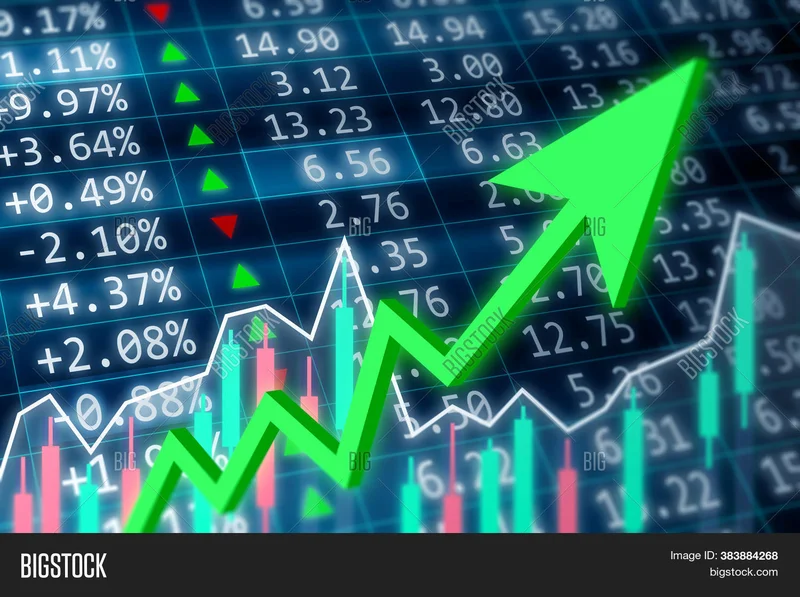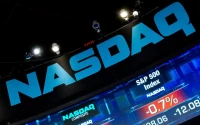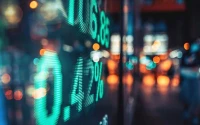Beyond the Bubble Talk: Understanding the AI Revolution's Economic Impact
Alright, let’s cut through the noise, shall we? Everywhere you turn, the air is thick with whispers—no, screams—about a looming stock market bubble, particularly in the tech sector, fueled by the electrifying surge of Artificial Intelligence. You hear the doomsayers quoting Herb Stein, warning that what can’t go on forever, won’t. They point to the charts, the ratios, the dizzying valuations, and shout, "It's 2000 all over again!" But what if we’re missing the forest for the financial trees? What if this isn't just another bubble, but the chaotic, exhilarating birth pangs of a new economic era, driven by a technology so profound it’s reshaping everything we thought we knew?
When I first started diving deep into the raw data, looking at the sheer scale of investment, the incredible pace of innovation, and the societal shifts already underway, I honestly just sat back in my chair, speechless. It’s easy to get caught up in the fear, to see only the red flags waving frantically. The S&P 500’s Cyclically Adjusted Price Earnings Ratio—or CAPE, in simpler terms, a long-term valuation measure that smooths out earnings cycles—is indeed hovering around 40. That's more than double its historical average and brushing up against the dot-com era’s peak. And don’t even get me started on the stock market's value relative to GDP, a metric Warren Buffett himself keeps an eye on, now sitting at a staggering 230 percent, dwarfing the 2000 high. These aren't just numbers; they're seismic tremors in the financial landscape.
The Roar of Innovation, Not Just Reckless Speculation
But let’s be honest: are these truly just signs of irrational exuberance, or are they the market struggling to price in an unprecedented leap in human capability? When you see a company like OpenAI, not yet consistently profitable, valued at $500 billion, it's easy to balk. Yet, what that valuation truly reflects is the belief—the collective bet—on the transformative power of its core technology. It's not just about today's earnings; it's about the future that’s being built, brick by digital brick. The so-called Magnificent Seven, the titans of the AI space, now command 37 percent of the S&P 500’s total value. That's a concentration we haven’t seen in a long time, and it signals not just a market trend, but a fundamental pivot towards technologies that are literally changing how every industry operates. We're talking hundreds of billions pouring into AI, accounting for nearly half of US GDP growth in recent quarters.
This isn't just money chasing hype; it's an economic re-architecture on a scale perhaps not witnessed since the dawn of the internet, or even the industrial revolution itself. Think about it: the printing press didn’t just create a new industry; it fundamentally reshaped knowledge, power, and society. AI, my friends, is doing the same, but at a speed that makes the printing press look like a snail race. The question isn't whether these valuations are high, but whether we're accurately assessing the magnitude of the disruption and value creation that’s still ahead. What if the market isn't entirely wrong, but just incredibly, wildly optimistic about what's coming, and we're just struggling to keep up with its breathless pace?

Navigating the Unpredictable Currents
The conventional wisdom, often echoed by financial giants like Ray Dalio, insists that stock market bubbles only burst when the Federal Reserve decides to tighten monetary policy. If that were the only trigger, given the political winds—with President Trump reportedly pushing for significant interest rate cuts and potentially appointing more dovish Fed members—this current surge could indeed run far longer than many anticipate. The idea that the Fed won't be raising interest rates anytime soon seems to be a strong undercurrent in today's market news.
However, relying solely on the Fed's short-term rates to predict the future of the stock market is like trying to navigate a vast ocean with only a tide chart for a small harbor. It misses the bigger picture. The 10-year Treasury bond yield, for instance, often plays a more critical role in the economy's performance and in how companies' future earnings are valued. Imagine the market as a massive, complex ship. The Fed’s short-term rates are like the rudder, steering in the immediate direction. But the long-term bond yields? Those are the deep ocean currents, powerful and often unseen, capable of pulling the whole vessel off course. If an overly accommodative Fed policy, perhaps an attempt to inflate away the staggering US public debt (projected to hit 128% of GDP by 2030, putting us in company with Greece and Italy!), causes those long-term yields to spike, that could unleash the "bond vigilantes" and send tremors through equity valuations.
We’ve seen the market swoon before, completely independent of Fed policy. Remember the sudden 34 percent decline in the S&P 500 at the onset of the COVID-19 pandemic? Or the 12 percent drop after Trump’s tariff announcement in April 2025? These weren't about interest rates; they were about external shocks, sudden shifts in the global economic fabric. The future of the us stock market, like any complex system, is subject to myriad forces, not just one. The market is a living, breathing entity, reacting to everything from geopolitical shifts to unexpected technological breakthroughs.
And this brings us to a crucial point: with such immense power being unleashed by AI, we also carry a profound responsibility. How do we ensure this technological tidal wave lifts all boats, rather than just a select few? How do we build safeguards and ethical frameworks that guide this intelligence responsibly, preventing unintended consequences even as we chase its boundless potential? These are the questions that keep me up at night, because the future isn't just about what can be built, but what should be built.
The Dawn of a New Economic Era
So, is the stock market today facing an inevitable crash, a catastrophic stock market crash that will wipe out fortunes? Maybe. But what if we’re witnessing something far more significant: a fundamental revaluation of human potential driven by AI? This isn't just about "stocks" or "market news"; it's about the very fabric of our future. While the financial metrics scream caution, the underlying technological revolution whispers of a future so profoundly different, so incredibly advanced, that we're only just beginning to grasp its scope. The real story isn't the bubble; it's the innovation underneath, the unstoppable march of progress, and our collective journey to shape it.










